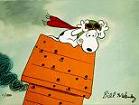mike scholl 1
Posts: 1265
Joined: 2/17/2010
Status: offline

|
quote:
ORIGINAL: Symon
Oh, jeeze louize. You have always been a solid contributor, Vettim, and I admit I was laying in wait for that argument. I’m sorry you were the one who got caught in the salvo. You don’t deserve it. You were just … handy
Yes, much data was taken in the ’42, ’43, ’44 time frame, and a lot of it wasn’t published till post war (with actual publication dates). But looking at the contemporary tests, it’s pretty clear that the IJ engines were tuned and run at their war standards. MAP was set at exactly what the engine called for, and CAT was taken from the gauge marks and control stops – meaning that it’s nonsensical to presume a different fuel. That would require changing everything and make the tests useless, as a result for comparison purposes.
There are a lot of apocryphal data, about the planes, from certain pilots. This is understandable. It mirrors exactly the flight tests and field modifications to the P-38 series. Pilots like Sakae could, and did, push the envelope; running the throttles past the stops, accepting the higher CAT and noting the resultant MAP and use what they “experience” effectively. The long, over-water, flight from Taiwan to the Philippines, was possible because it was tested, by experienced pilots, and it was found that within a certain regime, you could lean-out hard and to heck with CAT. Way outside the standard regime.
Knowledgeable pilots knew this and could push their planes beyond the set, standard, limits – presumably having access to good mechanics when they return home. So, Sakae giving a 346 mph rating to a Model-21 in overboost, is entirely reasonable. But how many Model-21 pilots knew what Sakae did? And since the IJA arbitrarily drafted all the mechanics, welders, shipyard workers, mechanical fitters (i.e., every stinking skilled craftsman in Japan), as privates, it’s no wonder that good old Suki Sakamoto had a chief mechanic that was better at steaming soybeans than he was at tweaking engines.
Sigh …
Soon as the war hit, everything went to crap. Japanese didn’t know that, at the time, but it’s obvious to us in hindsight. Lots of very good designs, but absolutely nothing to back them up with. Japan was literally a “one trick pony” and as soon as you move the barrel, she was toast.
One other point, John. By 44-45 production standards had slipped so badly that almost half the A/C engines being produced had to be rejected outright. Given the critical need, you can extrapolate that even those being accepted were probably a mixed lot...., with uneven capabilities. If pilot got one that was built right, he had a very capable A/C. If not, he was never going to get the promised and designed performance out of it. 
|
 Printable Version
Printable Version






















 New Messages
New Messages No New Messages
No New Messages Hot Topic w/ New Messages
Hot Topic w/ New Messages Hot Topic w/o New Messages
Hot Topic w/o New Messages Locked w/ New Messages
Locked w/ New Messages Locked w/o New Messages
Locked w/o New Messages Post New Thread
Post New Thread